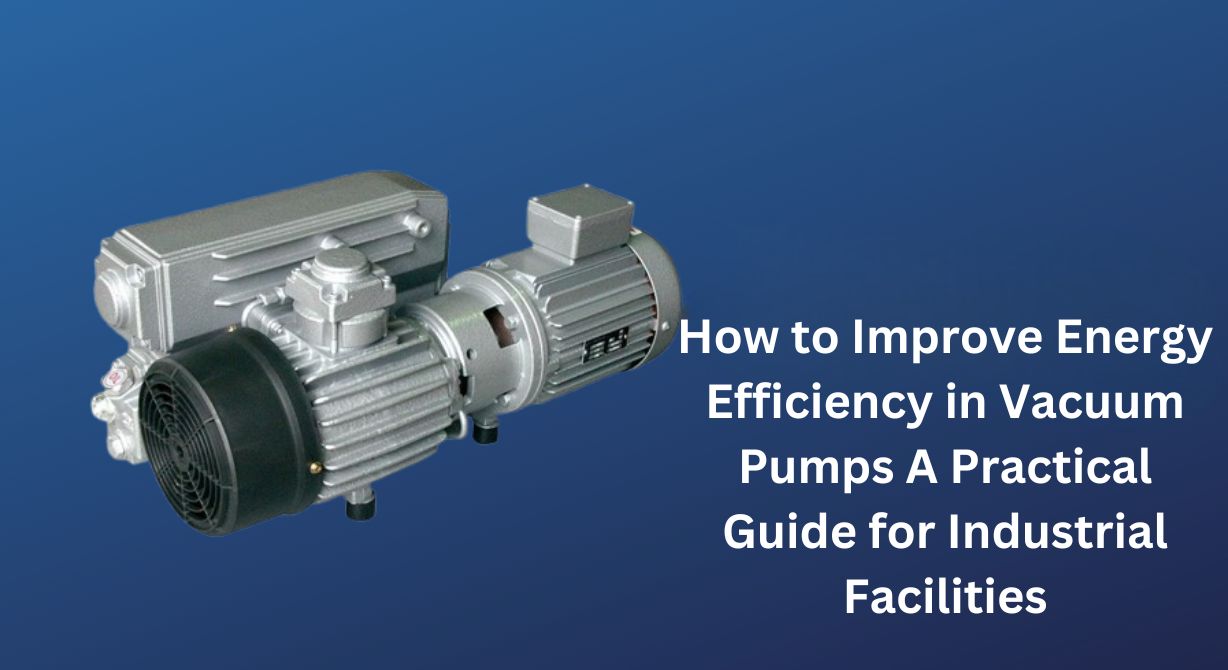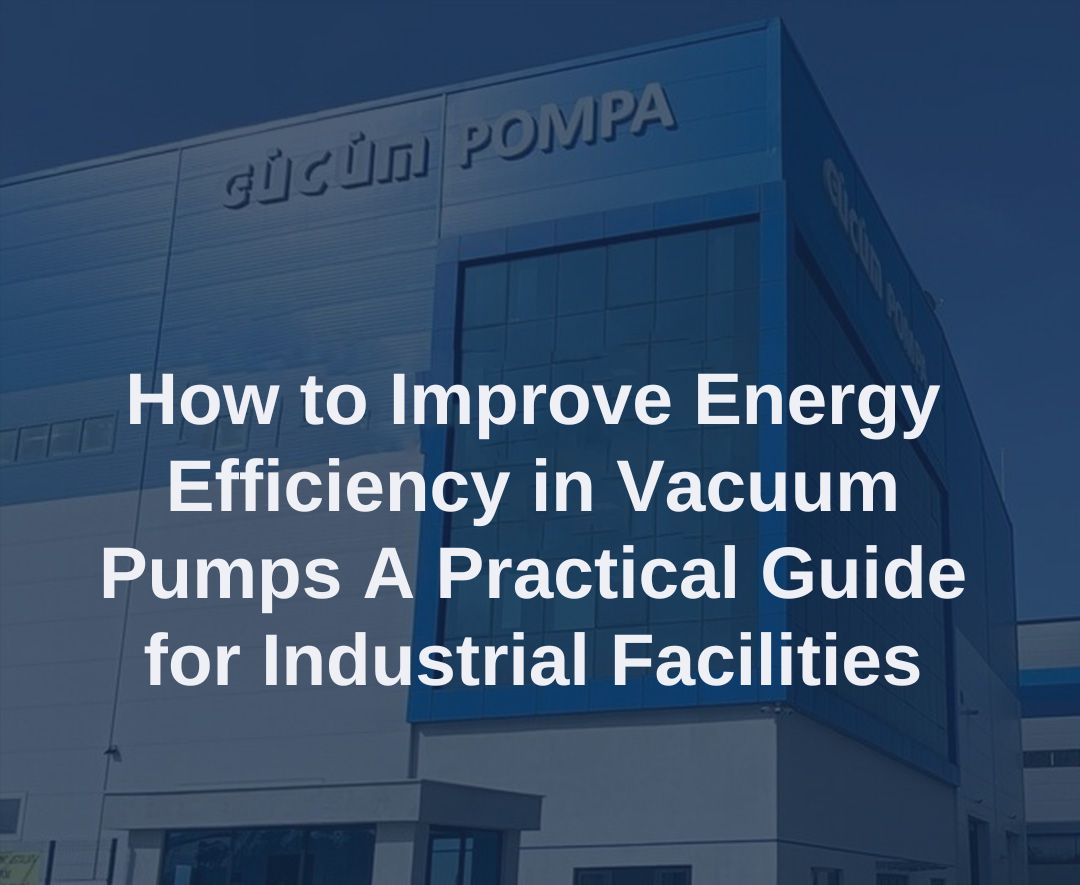How to Improve Energy Efficiency in Vacuum Pumps A Practical Guide for Industrial Facilities
How to Improve Energy Efficiency in Vacuum Pumps: A Practical Guide for Industrial Facilities
Use of Variable Speed Drive (VSD) Technology
In industrial facilities, vacuum pumps can significantly improve energy efficiency through the use of Variable Speed Drive (VSD) technology. VSD technology automatically adjusts the pump’s speed based on process requirements, preventing unnecessary energy consumption. For instance, in processes with low vacuum demand, the pump operates at a slower speed, reducing energy usage. This is particularly effective in continuously operating systems, leading to substantial savings. VSD-equipped vacuum pumps can reduce energy costs by up to 30%. However, to maximize the benefits of VSD technology, the pump must be properly calibrated for operating conditions. Incorrect settings can limit energy-saving potential. Facility managers should work with the manufacturer’s technical support to ensure proper configuration when integrating VSD systems.
Proper Pump Selection and Application Optimization
Energy efficiency is a critical factor in selecting a vacuum pump. Each application requires a specific vacuum level, and the pump’s capacity must align with process needs. For example, using a high-capacity pump for applications like food packaging, which require low vacuum levels, leads to unnecessary energy consumption. Low-capacity pumps are more efficient in such processes. Additionally, the choice of pump type is important; dry pumps consume less energy compared to oil-based pumps and reduce maintenance costs. Facilities should analyze their systems to optimize pump capacity and prevent energy waste. Regularly reviewing process parameters is an effective method to enhance energy efficiency.
Regular Maintenance and Cleaning
The energy efficiency of vacuum pumps is directly linked to regular maintenance and cleaning. Dirty or worn components cause the pump to consume more energy. For example, clogged filters or worn seals force the pump to work harder to achieve the desired vacuum level, increasing energy consumption and reducing system efficiency. Regular maintenance optimizes pump performance and prevents energy losses. Filter replacement, oil level checks, and timely replacement of worn parts are critical steps for maintaining energy efficiency. Facilities should establish maintenance schedules based on manufacturer recommendations and monitor pump performance through regular inspections. This approach both saves energy and extends the pump’s lifespan.
Sealing and Insulation Improvements
Sealing issues in vacuum systems negatively impact the energy efficiency of vacuum pumps. Air leaks cause the pump to work harder to reach the target vacuum level, increasing energy consumption. Sealing checks should be performed regularly to detect leaks in the system. For instance, pipe connections, valves, and seals should be inspected for wear or damage. Using high-quality seals and appropriate insulation materials reduces energy losses. Additionally, the vacuum system’s design should incorporate appropriate pipe diameters and minimal connection points to reduce pressure losses and enhance pump efficiency. Facilities should conduct periodic sealing tests and implement necessary improvements.
Use of Centralized Vacuum Systems
In large industrial facilities, using centralized vacuum systems instead of multiple vacuum pumps can improve energy efficiency. Centralized systems support multiple processes with a single pump group, optimizing energy consumption. When integrated with energy management systems, these systems can operate dynamically based on vacuum demand. For example, during low-demand periods, the system automatically operates fewer pumps, saving energy. While centralized systems may involve high initial costs, they reduce energy and maintenance costs in the long term. Facilities should evaluate the feasibility of centralized systems by analyzing their existing infrastructure.
Energy Monitoring and Data Analysis
Using energy monitoring systems is recommended to enhance the energy efficiency of vacuum pumps. These systems track energy consumption in real time and identify inefficiencies. For example, abnormal energy usage may indicate a pump malfunction or the need for process optimization. Data analysis helps understand energy consumption trends and identify improvement opportunities. Facilities can use IoT-based monitoring systems to continuously track pump performance and take proactive measures for energy savings. Additionally, energy efficiency reports assist facility management in making strategic decisions.
Optimizing Pump Operating Times
To improve energy efficiency, the operating times of vacuum pumps should be optimized. Pumps that run continuously when not needed cause energy waste. Automatic start-stop systems ensure the pump operates only when required. For example, during periods of low vacuum demand on the production line, the pump can automatically shut off. This is particularly effective in low-intensity production processes. Facilities should analyze process flows to optimize pump operating times and minimize energy consumption. Additionally, VSD technology, which allows pumps to run at lower speeds during low-demand periods, can further enhance this optimization.
Training and Staff Awareness
In industrial facilities, energy efficiency is achieved not only through technical solutions but also through staff training. Training operators and maintenance teams on the proper use and maintenance of vacuum pumps reduces energy losses. For example, energy efficiency training enables staff to correctly adjust pump settings and detect inefficiencies early. Awareness programs promote an energy-saving culture across the facility. Facility managers should organize regular training sessions and involve staff in energy efficiency goals. This improves operational efficiency and contributes to environmental sustainability objectives.

Integration of Energy Recovery Systems
The waste heat generated by vacuum pumps can be utilized through energy recovery systems. For example, the heat produced during pump operation can be used in the facility’s heating systems or other processes. This reduces energy consumption and environmental impact. Heat recovery units are particularly effective in facilities using high-capacity pumps. Facilities should assess the compatibility of their infrastructure when integrating energy recovery systems and collaborate with manufacturers. While these systems require initial investment, they significantly reduce energy costs in the long term.
Optimization of Environmental Conditions
The energy efficiency of vacuum pumps is also affected by environmental conditions. High temperatures or humid environments can cause the pump to consume more energy. Climate control systems optimize the pump’s operating environment, enhancing energy efficiency. For example, operating pumps in a cool and dry environment maintains performance and reduces energy consumption. Additionally, ventilation systems prevent heat buildup around the pump, improving system efficiency. Facilities should consider environmental conditions when planning pump placement and implement appropriate ventilation solutions.
Energy efficiency is critical for reducing operating costs and achieving environmental sustainability goals in industrial facilities using vacuum pumps. Steps such as VSD technology, proper pump selection, regular maintenance, sealing improvements, centralized systems, energy monitoring, operating time optimization, staff training, energy recovery, and environmental condition optimization provide energy savings. Facilities can achieve both economic and environmental benefits by implementing these strategies. The manufacturer’s technical support and industry expertise play a significant role in this process.


